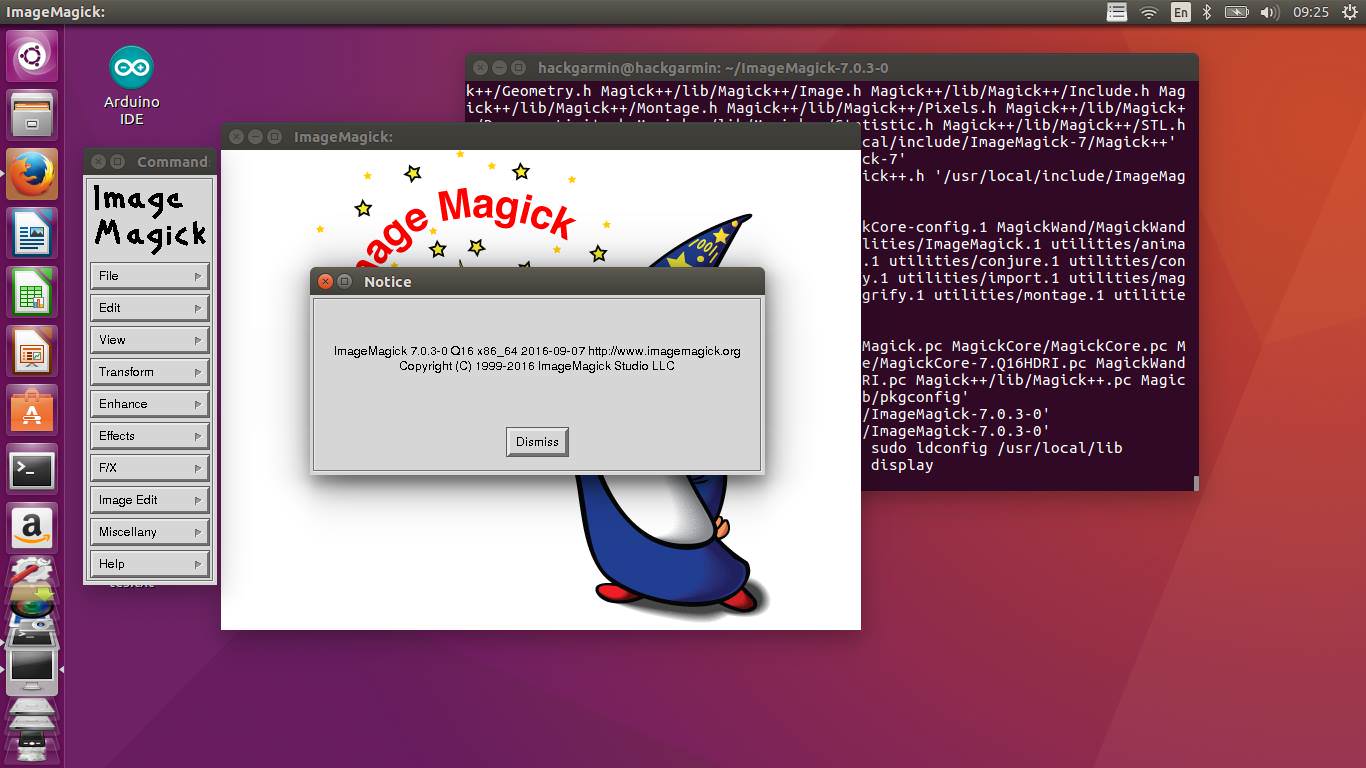

In the next sections we dissect the anatomy of the ImageMagick command-line. To ensure the script can run under Windows, change any backslash-parens (\() to just parens, the backslash (\) to ^, and double-up the percent (%) signs. flatten -brightness-contrast 20,20 -normalize dragonFire.png

\( +clone -flop \) +repage -insert "%" -background black \ \( +clone -rotate 180 \) -append +channel -virtual-pixel none -distort SRT "0.96 %" \ virtual-pixel none -distort SRT "%" +repage -flatten -extent 100x50% \ duplicate "%" -set option:rot "%" -virtual-pixel tile \

Xc:white -scale x1 +append -write mpr:clut +delete radial-gradient: mpr:clut \ You'll get a glimpse of the power and versatility of the ImageMagick command-line: magick -background none -size 960x960 xc:black \( xc:darkred -duplicate 1 +append \) \ append -background white -gravity center -extent 320x200 cylinder_shaded.png shadow 80x3+3+3 \) +swap -background none -layers merge \) -insert 0 -gravity center \ strokewidth 1 -fill red label:'50 %' -trim +repage \( +clone -background firebrick3 \ shadow 80x3+3+3 \) +swap -background none -layers merge \( +size -pointsize 90 \ draw 'roundrectangle 16, 5, 180, 85 20,40' -tile gradient:chartreuse1-chartreuse3 \ draw 'roundrectangle 264, 5, 304, 85 20,40' -tile gradient:chartreuse-green \ Given the complexity of the rendering, you might be surprised it is accomplished by a single command-line: magick -size 320x90 canvas:none -stroke snow4 -size 1x90 -tile gradient:white-snow4 \ Here we show percent completion of a task as a shaded cylinder: However, very few may realize the second, more complex command, gives a flat two-dimensional label a three-dimensional look with rich textures and simulated depth: Without knowing much about the ImageMagick command-line, you can probably surmise that the first command above converts an image in the JPEG format to one in the PNG format.
Imagemagick convert image format windows#
There are some other differences between Windows and Linux (involving quotation marks, for instance), but we'll discuss some of those issues later, as they arise. The parentheses that are escaped above using the backslash are not escaped in Windows. Line continuation characters need not be entered. Sometimes, however, the lines are wrapped by your browser if the browser window is small enough, but the command-lines, shown in white, are still intended to be typed as one line. We use the Linux style on these web pages, as above. In the Windows shell, use a carat character ( ^) for line-continuation. The backslash is the Linux line-continuation character. This example command is long enough that the command must be written across several lines, so we formatted it for clarity by inserting backslashes ( \). delete 0 +swap -compose Multiply -composite button.gif") \( -clone 0 -shade 110x50 -normalize -channel BG -fx 0 +channel -matte \) \
Imagemagick convert image format plus#
\( +clone -shade 110x90 -normalize -negate +clone -compose Plus -composite \) \ Or it can be complex with a plethora of options, as in the following: magick label.gif +matte \ The ImageMagick command-line tools can be as simple as this: magick image.jpg image.png


 0 kommentar(er)
0 kommentar(er)
